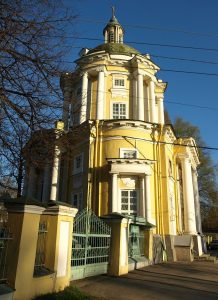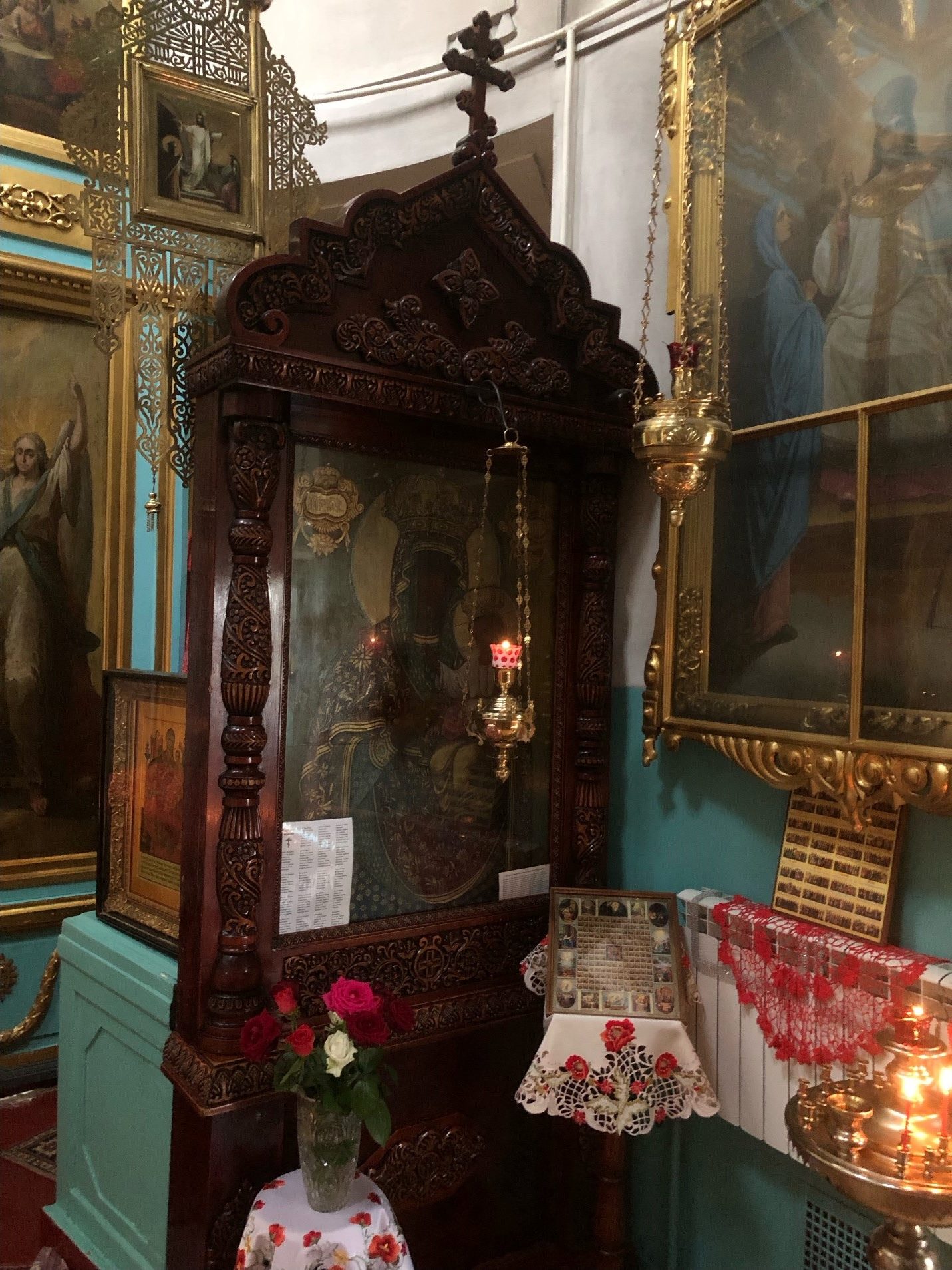Church of the Vladimir Icon of the Mother of God in Vinogradovo

In the first half of the XVII century, by order of Gabriel Pushkin, a wooden church was built in the village of Vinogradovo, consecrated in honor of the Vladimir Icon of the Mother of God. The temple was built near Pushkin Estate and equipped with a chapel of St. Nicholas the Wonderworker. The researchers note the unusual layout of the temple, which is represented by a circle inscribed in a triangle. The upper part of the building is decorated with a drum with a rotunda and a dome. According to the historian Igor Grabar, the architect Vasily Bazhenov was the author of the project in the forms of early classicism, according to another version it was Matvey Kazakov. The finishing of the complex began in 1777. During the Moscow fire of 1812, the village of Vinogradovo was not damaged, but French troops were quartered in the estate for two weeks. In 1813, repairs were carried out in the estate. The church was not heated, and by 1822 the question arose about the need to erect a warm chapel. By that time, the village of Vinogradovo was owned by the Benckendorff nobles, under whose leadership the construction of the chapel of St. Nicholas the Wonderworker began. Three years later, Archbishop Filaret consecrated the newly built room. The decoration of the chapel was declared in detail: a two-tiered gilded iconostasis with carved Royal Gates was installed in the room. Above them there was an image of the Last Supper, on the right an icon of Christ without its oklad (cover) and a temple image of Nicholas the Wonderworker were placed, on the left there was an image of the Virgin. After the revolution of 1917, the church continued to operate. It is known that after the closure of St. Sergius Church of St. John the Baptist Monastery in 1937, its iconostasis was moved to the Vinogradovskaya Church for the construction of an additional chapel of St. Sergius of Radonezh. During the defence of Moscow in the Great Patriotic War, the front line was 8 km from the church, and a machine gun was installed on the roof of the local church. At that time, the head of Sergius of Radonezh, extracted from the shrine of the Trinity Cathedral, was secretly kept in the walls of the church. There is also evidence that the chapel in honor of St. Sergius of Radonezh was consecrated only in 1947 after the relic was returned to the newly discovered Trinity-Sergius Lavra and the relics were donated to the temple. During the first half of the 20th century, the church was in a dilapidated state: the cornices collapsed, the roof overgrown with trees, plaster crumbled. Through the efforts of the servants, the temple was maintained in working condition, but major repairs were carried out only in 1954. During the reconstruction, white stone stairs and sandricks were restored, a concrete blind area was completed, and the facing plaster was updated. Six years later, another renovation of the facades was carried out, and in 1967, by order of the Bureau for the Protection of Architectural Monuments of the Moscow Region, the building was reconstructed in its original forms. The lost columns of the Doric order on the drum of the main building, plaster rods and cornices of the main facade were restored, the white stone decor was revealed, the platbands were recreated, and the roof of the bell tower was replaced.
Address: Moscow, Dmitrovskoe shosse, 170, p. 1

